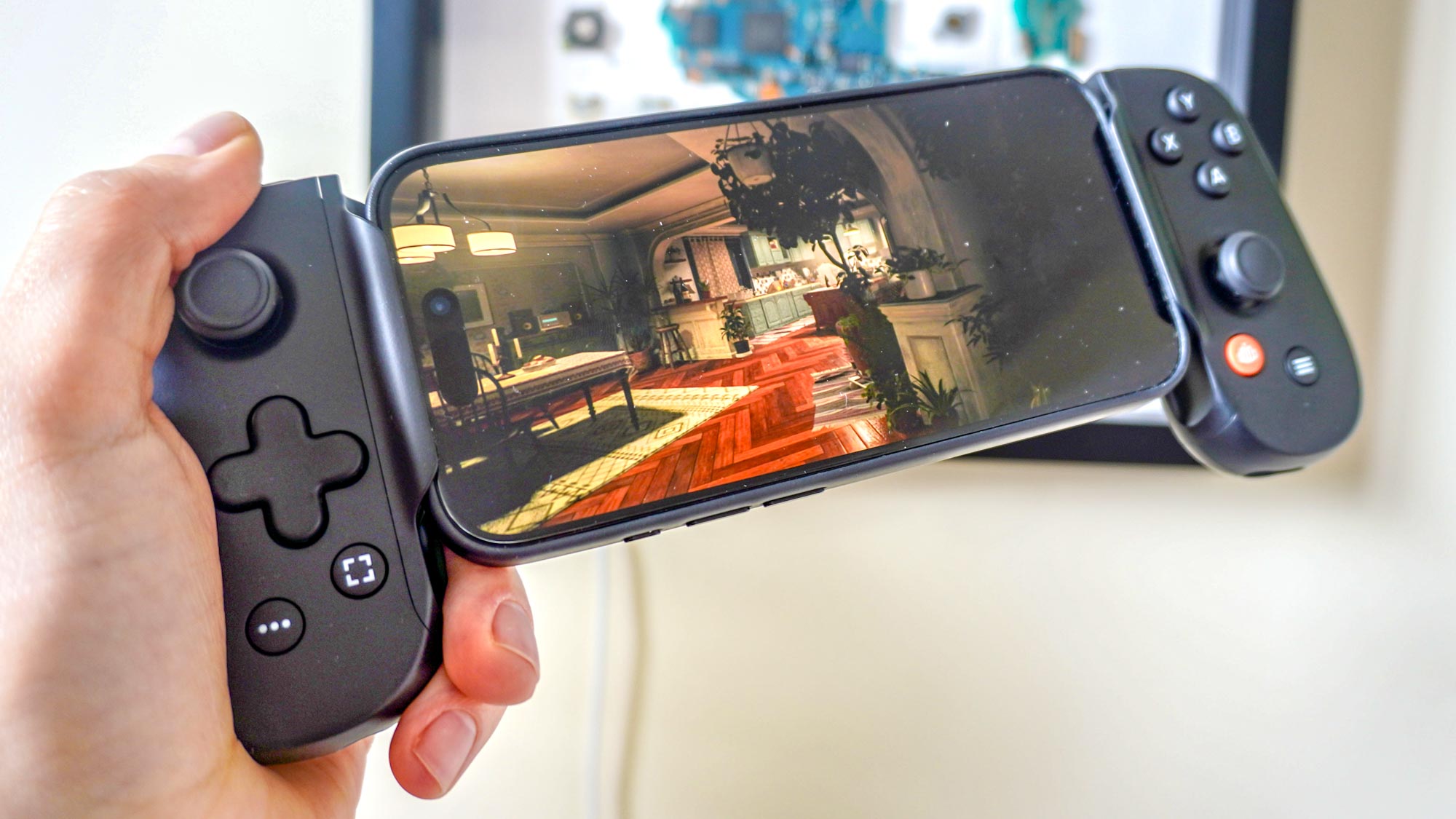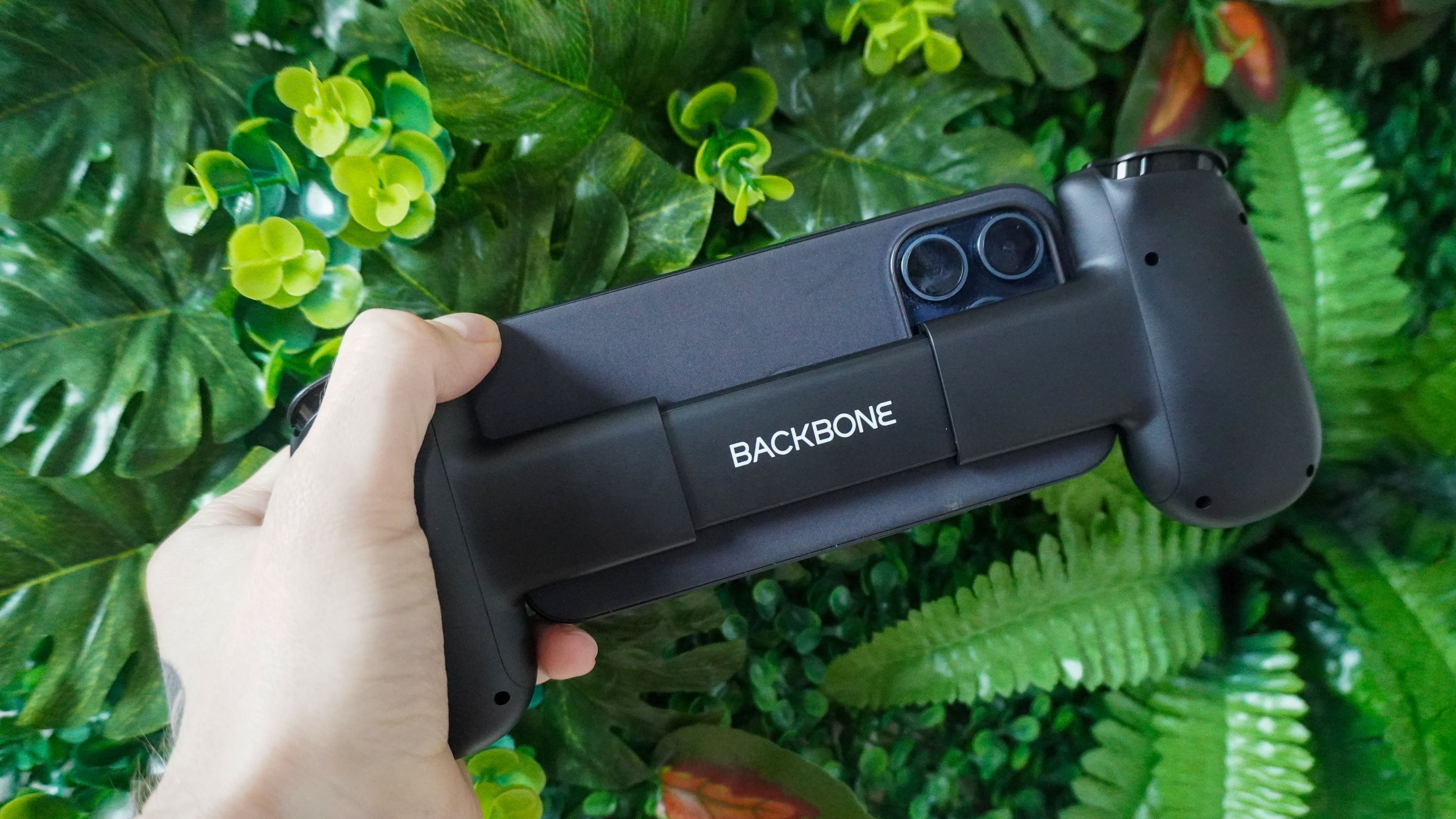The 2nd generation Backbone One fixes my biggest gripe — perfectly timed for Apple’s shock retro game emulator move
Clumsily playing Castlevania to my heart’s content

I’ve said it before and I’ll say it again — the Backbone One is easily my favorite smartphone game controller. After reviewing the first generation device for sister site Laptop Mag, nothing has come close in terms of comfort in hand, tactility of buttons, the deep travel of the triggers, and the seamless software integration that turns it into a game console experience.
In the long-term, however, the fact you had to take your case off to play has grown from a small gripe to a death blow, which the smashed back of my iPhone 13 Pro will prove. Yes, I am more clumsy than most — the various bruises on my shins after my daily trip to bump into the coffee table prove that.
But through the use of magnets, Backbone has turned all that around with its 2nd generation accessory (and my currently crack-free iPhone 15 Pro is breathing a sigh of relief). Pair that with Apple’s shock move to approve retro game emulators on its app store, and now is absolutely the perfect time to pick one up.
Backbone One (2nd gen): $99 @ Amazon
Everything you love about the Backbone One, but with one small-but-significant change. You still have that super comfortable design and tactile buttons, paired with stellar app support. But with the magnetic attachments, you can insert your phone in with any compatible case!

Protected play
Straight out of the box, things will look like business as usual — the standard skinny inlet where you’ll need to take your case off to use it. But there’s a twist in the form of two new larger attachments.
Simply pop these smaller ones off the magnetic inserts, stick them in, and you can now play to your heart’s content with the confidence of knowing your phone is protected with a case. It’s a simple yet effective solution that means clumsy oafs like myself don’t suffer anymore from the dreaded corner drop impact.

Now, there is a condition to this. Not every case is supported here. You can’t rock up with a massive Otterbox beast of a cover and expect it to fit. Backbone has put a list of the cases that are compatible with these new magnetic adapters for iPhone 15 and 14 series, alongside the most popular Android slabs like Samsung Galaxy S23, Google Pixel 8 and 8 Pro, Pixel 7 Pro, Pixel Fold, and Samsung’s Galaxy Z Fold 5.
In short, if your case is made by the OEM, or it comes from the more mainstream likes of Mous, Spigen, Dbrand or Zagg, then you’ve got nothing to worry about. But please don’t take my word for it, and check before you buy.
Provided you play by Backbone’s rules here, you can keep your phone all snug and protected while gaming for hours at a time like I always find myself doing with Resident Evil Village.
Going back in time
But that’s not all I’m going to be playing — sooner rather than later. You see, with the EU’s big push to allow for third-party app stores, ripple effects are being felt worldwide. Most surprisingly is the fact that retro game emulators are being allowed onto the marketplace.
Before you pop the champagne, since this is Apple, there are some caveats. Namely, the wording of this new policy is vague around whether someone will be able to publish a straightforward emulator where users can add their own classic games (also known as ROMs), as this enters a legal gray area.

The Cupertino crew addresses this in broad terms by saying that developers "are responsible for all such software offered in your app, including ensuring that such software complies with these Guidelines and all applicable laws." You’ll even spot Apple saying that "retro game console emulator apps can offer to download games," but the unclear bit is specifically how players will download them.
My thinking is you won’t see the likes of PSPPP emulator make the jump over (though I may get a little emotional if I get the chance to play Metal Gear Ac!d on my iPhone), but maybe official options with in-app purchases for the games. Game publishers already publish titles on iOS that run through an emulator, so this would be a logical extension that keeps game emulation in the legal clear.
It’s not the dream scenario I pictured — like what you get on Android — but this is a big step forward and the Backbone One is going to be one of the best ways to feel that nostalgia.
More from Tom's Guide
Sign up to get the BEST of Tom's Guide direct to your inbox.
Get instant access to breaking news, the hottest reviews, great deals and helpful tips.

Jason brings a decade of tech and gaming journalism experience to his role as a Managing Editor of Computing at Tom's Guide. He has previously written for Laptop Mag, Tom's Hardware, Kotaku, Stuff and BBC Science Focus. In his spare time, you'll find Jason looking for good dogs to pet or thinking about eating pizza if he isn't already.

